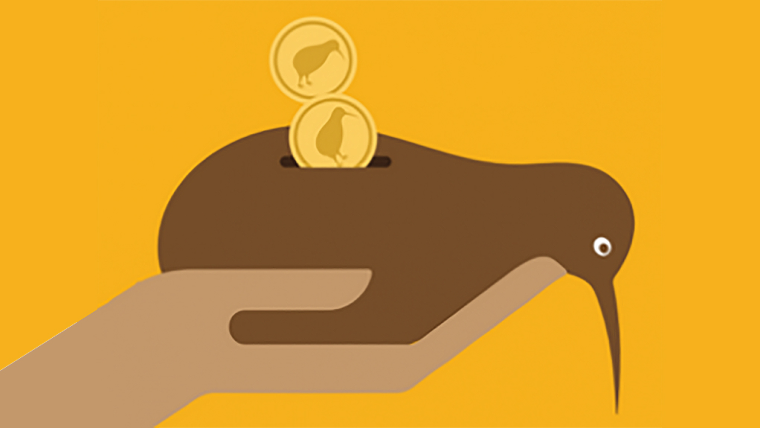
Almost $173 million was withdrawn from KiwiSaver funds during March, the largest ever monthly early withdrawals from the retirement savings scheme.
Data from Inland Revenue which tracks KiwiSaver statistics shows 7,320 people withdrew a total of $172,967,101 from KiwiSaver during March. That's the most money withdrawn in a single month, topping the $171.4 million in March 2021, which was withdrawn by 7330 people. KiwiSaver was introduced in July 2007.
This year's March figure is a 31% increase from the $132 million withdrawn from KiwiSaver in February 2024, and up 59% from $108.6 million in March 2023.
Breaking down the March 2024 numbers, 3,630 people withdrew $143.7 million in the first home category, while 3,680 people withdrew almost $29.3 million in the financial hardship category.
Compared to February, the number of people who withdrew KiwiSaver money because of financial hardship rose 480 and almost $2.85 million, while first home withdrawals rose by 810 people and $37.5 million.
Compared to March 2023, the number of people making financial hardship withdrawals rose 1,020 and almost $9 million, and for first home withdrawals rose by 890 people and $54.7 million.
'Under duress'
Tom Hartmann, Personal Finance Lead at the Retirement Commission, told interest.co.nz hardship withdrawals seem concerning because "people are taking out money under duress."
From looking at financial hardship withdrawals over the last 12 months, Hartmann said there had been a 90% increase in KiwiSaver withdrawals compared to the same period a year earlier.
Between March 2023 and March 2024, $262.5 million was withdrawn from KiwiSaver because of financial hardship.
In the previous year, between March 2022 and March 2023, financial hardship withdrawals came to $136.9 million.
“If you look at the number of withdrawals over that time, there has been a 68% increase in the number of people withdrawing,” Hartmann said.
In the year to March 2024, 33,130 people withdrew KiwiSaver money because of financial hardship, up from 19,760 in the 12 months to March 2023.
Hartmann said while the statistics showed the KiwiSaver withdrawal numbers were increasing, it was important to note the average amount withdrawn per person had only increased from $6,927 to $7,923, or by 14%.
Hartmann said only 1% of KiwiSaver members had withdrawn funds for financial hardship reasons in the past year, compared to 0.6% of members in the year to March 2023.
“There is a sustained uptick, but that's to be expected with more people in [KiwiSaver] and with the funds under management growing. So it's best to track this by the average amount withdrawn per person,” he told interest.co.nz
This gave a “sense of scale” compared to the total funds under KiwiSaver management and total number of members.
As of March 2023, nearly 3.3 million New Zealanders were members of KiwiSaver, as reported by the Financial Markets Authority's annual KiwiSaver report last September. This means that nearly two-thirds of the country's population have a KiwiSaver account.
Total KiwiSaver funds under management rose $4 billion, or 4.3%, to $93.7 billion in the March 2023 year.
Loss of compound interest
Hartmann said financial hardship withdrawals needed to be a last resort due to the loss of compound interest over time.
“They're really [for], when you're having difficulty putting food on the table, making ends meet in terms of bills that you're paying now, including mortgage repayments,” he told interest.co.nz.
“So we don't want anyone to rush out, do anything hasty, but it can be an appropriate choice to make a hardship withdrawal, obviously to make ends meet. There has been that vision in the scheme since its start.
Hartmann also added that the number of people on a savings suspension continues to trend downwards – meaning less people are suspending their KiwiSaver contributions than previously.
At the end of March 2024, 86,300 people were on a savings suspension compared to 103,955 at the end of March 2023, a decrease of about 17%, he said.
15 Comments
"Almost $173 million was withdrawn from KiwiSaver funds during March, the largest ever monthly withdrawal from the retirement savings scheme."
"3,630 people withdrew $143.7 million in the first home category, while 3,680 people withdrew almost $29.3 million in the financial hardship"
problem, where is the people withdraw because of retirement? or there isn't any people retire on March?
First home withdraw average value $39k, and hardship withdraw average value 7.9k, so glad you didn't link this number to gender pay gap, or ethnicity as you did last time.
Firstly, adding the numbers you can see that it's exclusive of retirement withdrawals. Granted the wording should've been early KiwiSaver withdrawals or something but still, early withdrawals are still an interesting statistic.
Secondly, Ella/Interest.co.nz weren't the ones linking it to gender or ethnicity, that was the retirement commission. Interest.co.nz were just reporting on it.
"Almost $173 million was withdrawn from KiwiSaver funds during March, the largest ever monthly withdrawal from the retirement savings scheme."
"Firstly, adding the numbers you can see that it's exclusive of retirement withdrawals."
143.7 + 29.3 = 173.
where is the retirement withdraw?
you cannot state 173 is the total withdraw then claim that's after deduction of retirement withdraw, can you?
in fact, there should be other types of withdraws besides retirements.
What about the other big withdrawal reason - moving to Australia. Lots of people are moving their Kiwisaver over to an Australian Super Fund. That would be an interesting number to look at as well, especially any recent increases.
Unsurprising around hardship withdrawals. All it takes is a divorce, illness, accident, and everything can go downhill fast for those living on the breadline due to high mortgage costs and cost of living. I seem to be hearing more and more about these scenarios.
In the year to March 2024, 33,130 people withdrew KiwiSaver money because of financial hardship, up from 19,760 in the 12 months to March 2023.
Its not just people living on the bread line, when people get more money the spend more, some people think they are doing well if they are meeting their debt repayments, personal loan, credit cards etc.
Then something goes wrong and they are screwed because not only do they have no savings to fall back on they still have to pay off the large amount credit they owe, because people where willing to lend to them because they had a good income.
I have seen plenty of people who are on good salaries get in trouble when something goes wrong.
Isnt this expected? The more money in KiwiSaver, the more money that comes out.
Money goes into KS = big % invested overseas and receives back dividends, interest, capital growth, etc.
Money comes out of KS = a % goes to overseas lenders (bigger hole in our balance of payments) or a % goes to landlords
Anyone else see a double whammy here?
Man alive I would love to see a cost / benefit analysis of what raising the OCR does to NZ Inc.
We have seen the impact of lowering it to below market rates - we are only seeing a fraction of that reduction being unwound.
There is a very interesting loophole in the NZ Kiwisaver rules. If you move to Australia and move your Kiwisaver over to an Australian super fund, you can only withdraw $15k of it to put towards your first home. However, if you withdraw all of your Kiwisaver in NZ and buy a house here, you can immediately sell it and take all of the funds over to Australia to buy a house there. Where you still qualify as an Australian First Home Buyer. Neat, huh?
I think one of the rules of the KiwiSaver withdrawal for FHBs is that you intend to live in the home. Immediately selling it might cause the powers that be to take a closer look
I'd be interested to know if anyone ever has been pulled up for not living in the house for 6months
Hartmann said financial hardship withdrawals needed to be a last resort due to the loss of compound interest over time.
Sounds a lot like financial advice that implies Kiwisaver investments always go up. Someone working in the financr industry should know better.
The longer the timeframe, the more likely the investments are to go up. And KiwiSaver has a very long timeframe. The statement isn't implying they always go up, it implies over the long term they will go up which is almost certainly true. If they don't we likely have bigger problems.
Also, when markets do go down, withdrawing still impacts compound interest as withdrawals will have a bigger impact since you are taking a larger % of your savings if you make a fixed amount withdrawal.

We welcome your comments below. If you are not already registered, please register to comment
Remember we welcome robust, respectful and insightful debate. We don't welcome abusive or defamatory comments and will de-register those repeatedly making such comments. Our current comment policy is here.